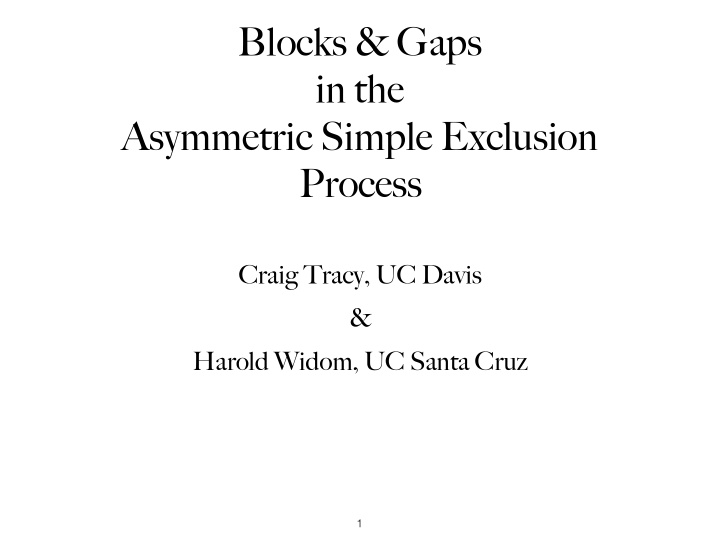



Blocks & Gaps in the Asymmetric Simple Exclusion Process Craig Tracy, UC Davis & Harold Widom, UC Santa Cruz 1
Simple Random Walk • Can make time continuous by giving particle a “random alarm clock”, i.e. exponential distr. with mean 1. • This is arguably one of the most important, if elementary, stochastic processes . • Want many particles —to be interesting these particles must interact. 2
Asymmetric Simple Exclusion Process (ASEP) A continuous time Markov process • Particles move on ℤ according to two rules: • A particle waits at x an exponential time with parameter one, and then chooses y with probability p(x,y). • If y is vacant at that time it moves to y, while if y is occupied it remains at x. • “Simple" refers to the fact that jumps are allowed only one step to either the right or left • “Asymmetric” refers to the case p ≠ q. 3
Transition Probability: P Y (x;t) • FFFor one particle the probability that the particle is initially at y is at x at time t is This result is elementary but the generalization to more than one particle is rather subtle 4
N-particle ASEP 5
• To extract information from P Y (x;t), we start by looking at marginal distributions; the simplest are one-point functions: Second Example: ASEP Blocks m th particle is the left-most one in a contiguous block of L particles 6
Case m=1, left-most particle 7
General m Identity Two 8
9
10
11
12
13
Thank you for your attention 14
15
Thank you for your attention 16
Recommend
More recommend